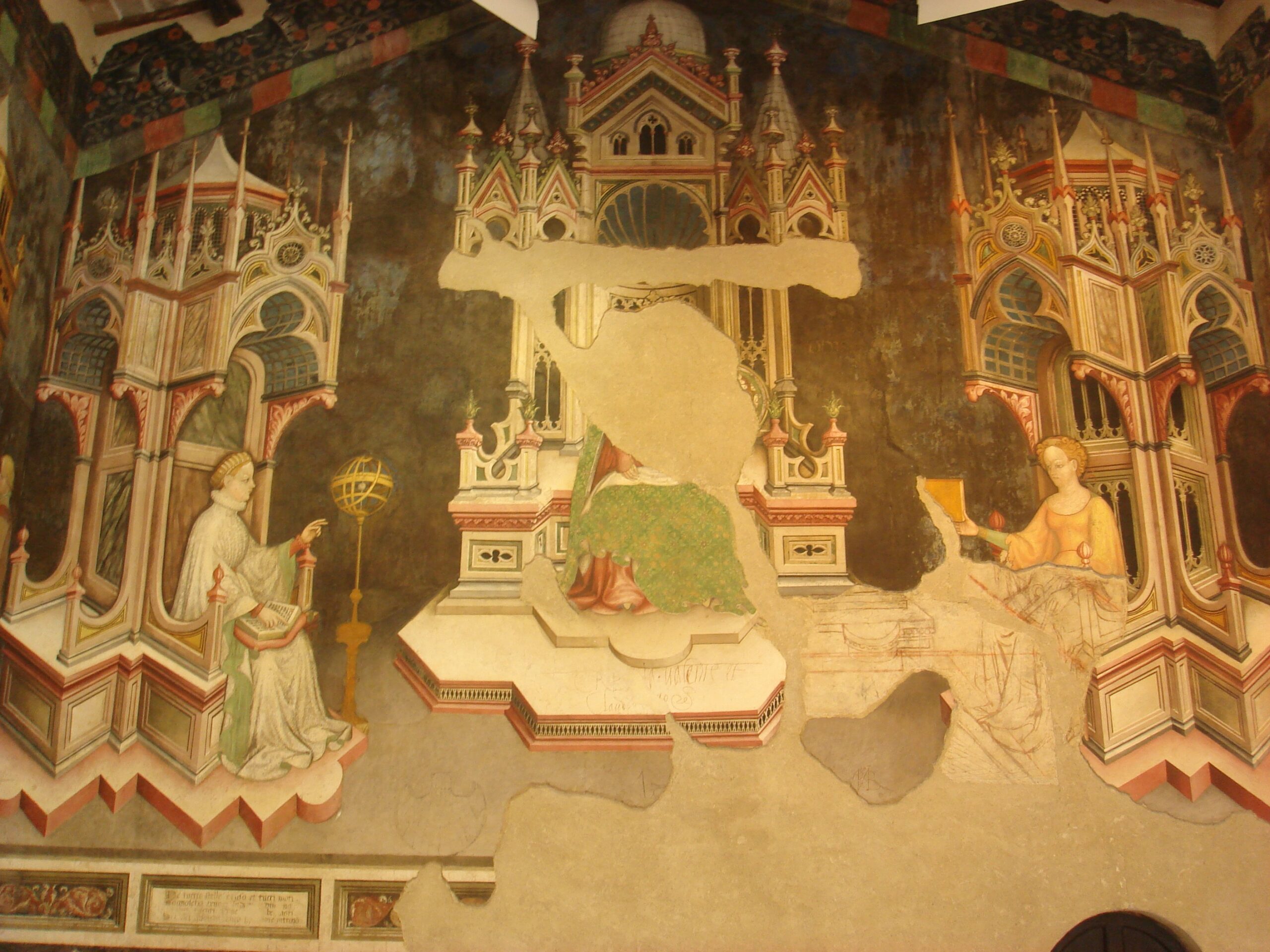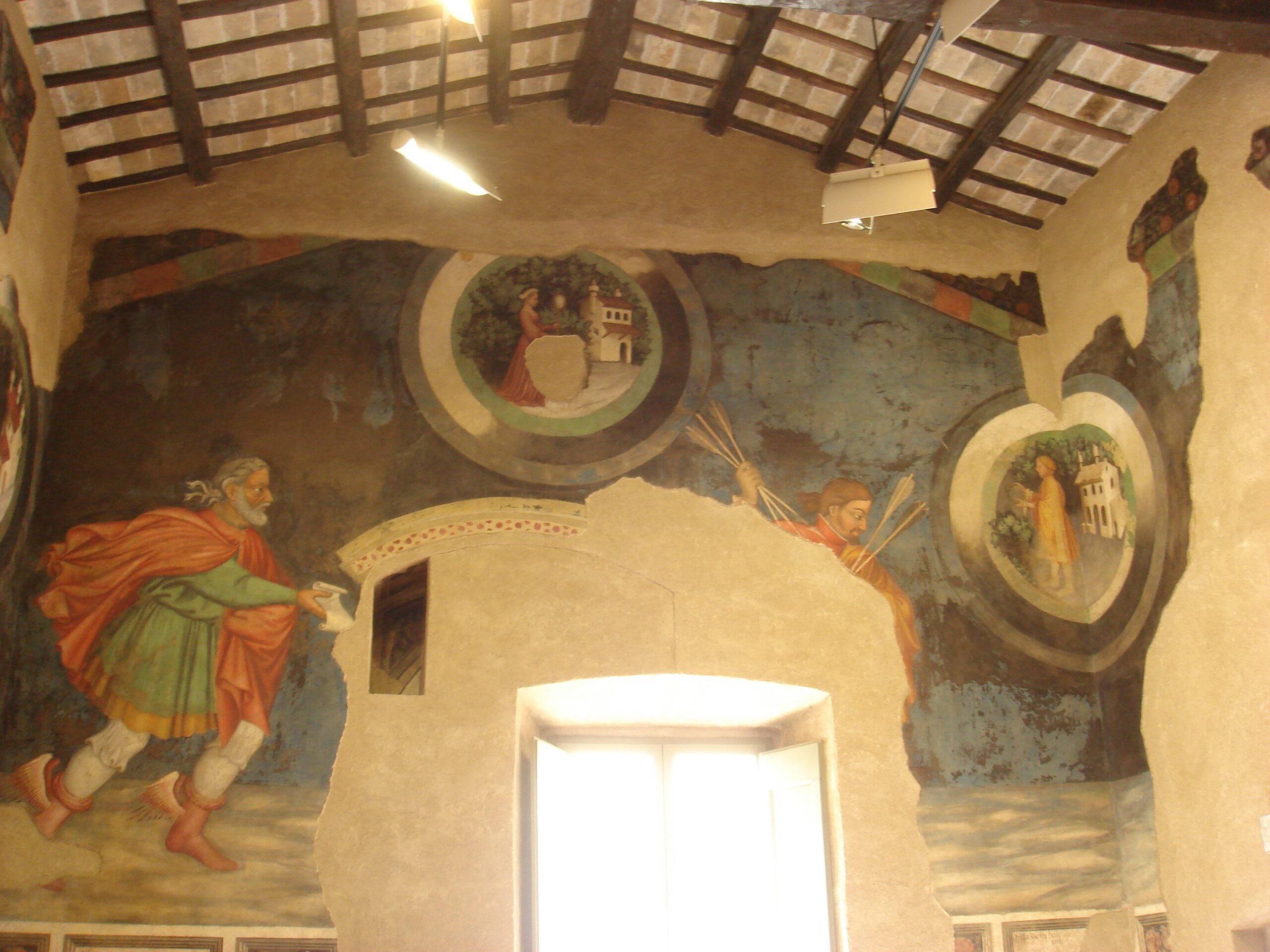In Umbria, not far from Perugia and Assisi, sits the town of Foligno. Just off the main piazza is the Palazzo Trinci, a thirteenth-century palace housing a group of museums. The palazzo, however, is best known for several fresco cycles including the decoration of the chapel by Ottaviano di Martino di Mello (1424) and two areas displaying Uomini Illustri (one in a main room and a second cycle in an above-ground passage to the Duomo). A third cycle, in a second large gathering space, depicts allegorical figures of the seven Liberal Arts, the planetary gods, and the ages of humanity (painted before 1417). Verses in Latin and Italian identify the Planets and the Ages while the enthroned Allegorical figures of the Liberal Arts include recognizable attributes. For example, Music is seated before a small organ with a stick raised above her head to strike bells. A young boy kneels before Grammar and holds a stylus against a book, open towards the viewer, and which displays the letters of the alphabet running along the top of the right-hand page.
Philosophy, sitting between Geometry and Astronomy, dominates the room. Philosophy’s throne faces out to the viewer in a way that reminds of an enthroned Virgin Mary; the importance of Philosophy is evident as the throne is higher on the picture plane and a more elaborate combination of architectural types. Across the room, on the facing wall, the unknown artist depicts Mercury and Jupiter as well as roundels of two ages: “adolescence” and “youth.” Together these rooms and the collections celebrate the erudition of the Trinci family. Anne Dunlop notes that the family (especially during the lifetimes of Ugolino and his sons) were known for their interest in “antique” learning, for collecting antiquities–still housed in the palazzo–as well as for their support of two early humanist poets: Dominican Federico Frezzi (c.1350-1415) and Francesco da Fiano (c.1350-1421).
Palazzo Trinci, Courtyard (photo credit: Jennifer D. Webb)
Palazzo Trinci, Interior view (photo credit: Jennifer D. Webb)
Philosophy, Geometry and Astronomy. Room of the Arts and the Planets, Palazzo Trinci (before 1417). (photo credit: Jennifer D. Webb)
Music, Dialectic, and Grammar. Room of the Arts and the Planets, Palazzo Trinci (before 1417). (photo credit: Jennifer D. Webb)
Mercury, Adolescence, Jupiter and Youth. Room of the Arts and the Planets, Palazzo Trinci (before 1417). (photo credit: Jennifer D. Webb)
Reference: Anne Dunlop. Painted Palaces: The Rise of Secular Art in Early Renaissance Italy. University Park PA: Pennsylvania State University Press, 2009.
Further reading: Paul F. Grendler. Schooling in Renaissance Italy: Literacy and Learning, 1300-1600. Baltimore and London: Johns Hopkins University, 1989; Palazzo Trinci.
Posted by Jennifer D. Webb





